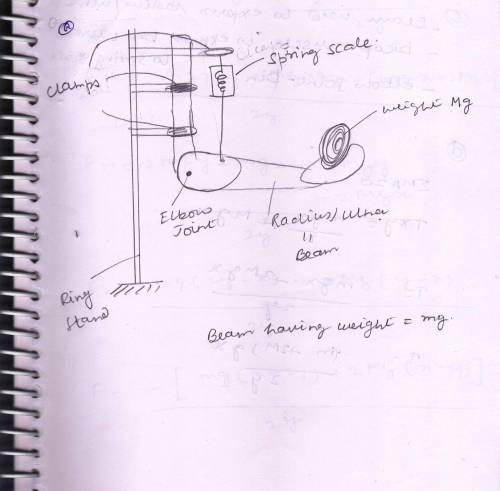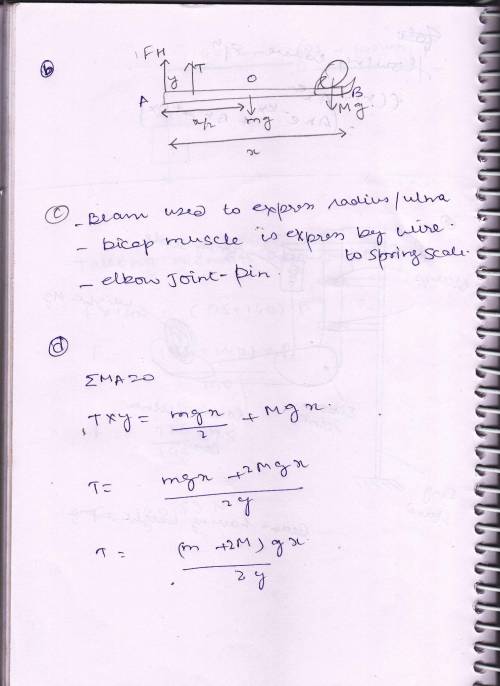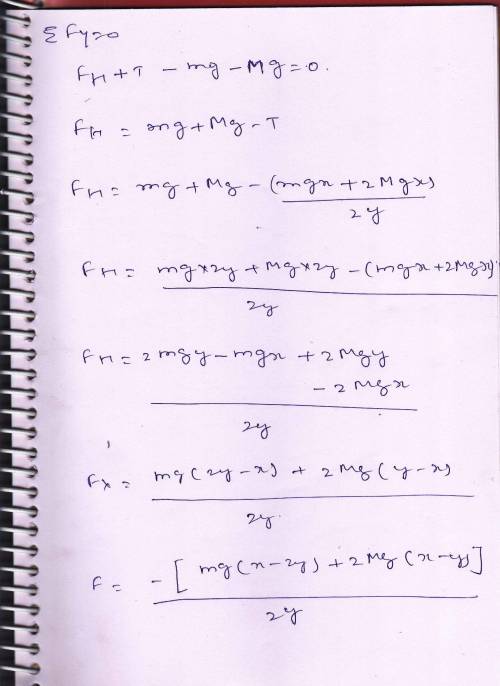
Engineering, 05.05.2020 03:44 rebekahlm
Your task is to design and build an apparatus that replicates the lower arm and biceps muscle system. The equipment used are a Beam, a ring stand, masses, spring scales, clamps, pins. The human arm can be modeled as follows. The object of interest should be the bones in the lower arm (forearm) and hand (considered a beam). It interacts with an object held in your hand, with the biceps muscle, with the bone in the upper arm at its joint with the forearm, and with the Earth. Use the following steps to build the apparatus for the arm:a) Draw a labeled sketch of your proposed system. Hint: Hold a heavy object in your hand, with your lower arm horizontal. Feel different parts of your arm to decide what objects interact with the arm. b) Construct a free-body diagram for this "beam". You will have to decide what forces to include, and where they are applied by carefully considering the other objects interacting with the beam. c) List the equipment you will use to model the beam, the bicep muscle, and the elbow joint. d) Determine the biceps tension and force from the humerus bone when holding an object in the hand. To do this, develop a mathematical procedure that involves the conditions of equilibrium. Use the procedure to make a prediction for the reading in any spring scales used to model the arm. e) List the assumptions regarding objects, interactions and processes in your procedure and design. How could they affect the result?

Answers: 2


Other questions on the subject: Engineering

Engineering, 06.07.2019 03:10, tyheath42
Steel balls 12 mm in diameter are annealed by heating to 1150 k and then slowly cooled to 400 k in an air att 325 k and h -20 w/m2 k. assume the properties of the steel to be k- 40 w/m k, p 7800 kg/m3, and cp 600 j/kg k. a. determine whether lumped system method can be used to analyze this problem and if so why" b. determine the time required for the cooling process. c. determine the total amount of heat lost from each ball to the ambient air
Answers: 1

Engineering, 06.07.2019 04:10, makenziemartinez
Aheat pump using refrigerant-134a heats a house by using underground water at 8°c as the heat source. the house is losing heat at a rate of 60,000 kj/h. the refrigerant enters the compressor at 280 kpa and 0°c, and it leaves at 1 mpa and 60°c. the refrigerant exits the condenser at 30°c. determine: (a) the power input to the heat pump, (b) the rate of heat absorption from the water, and (c) the increase in electric power input if an electric resistance heater is used instead of a heat pump
Answers: 2

Engineering, 06.07.2019 04:10, kathiewallentin1767
Steam enters a converging-diverging nozzle at 1.0 mpa and 500°c with a negligible velocity at a mass flow rate of 2.5 kg/s, and it exits at a pressure of 200 kpa. assuming the flow through the nozzle to be isentropic, determine: the exit area and (a) (b) the exit mach number
Answers: 2
You know the right answer?
Your task is to design and build an apparatus that replicates the lower arm and biceps muscle system...
Questions in other subjects:

Biology, 03.04.2020 01:49

Mathematics, 03.04.2020 01:49


Mathematics, 03.04.2020 01:49


Chemistry, 03.04.2020 01:49



Chemistry, 03.04.2020 01:49






